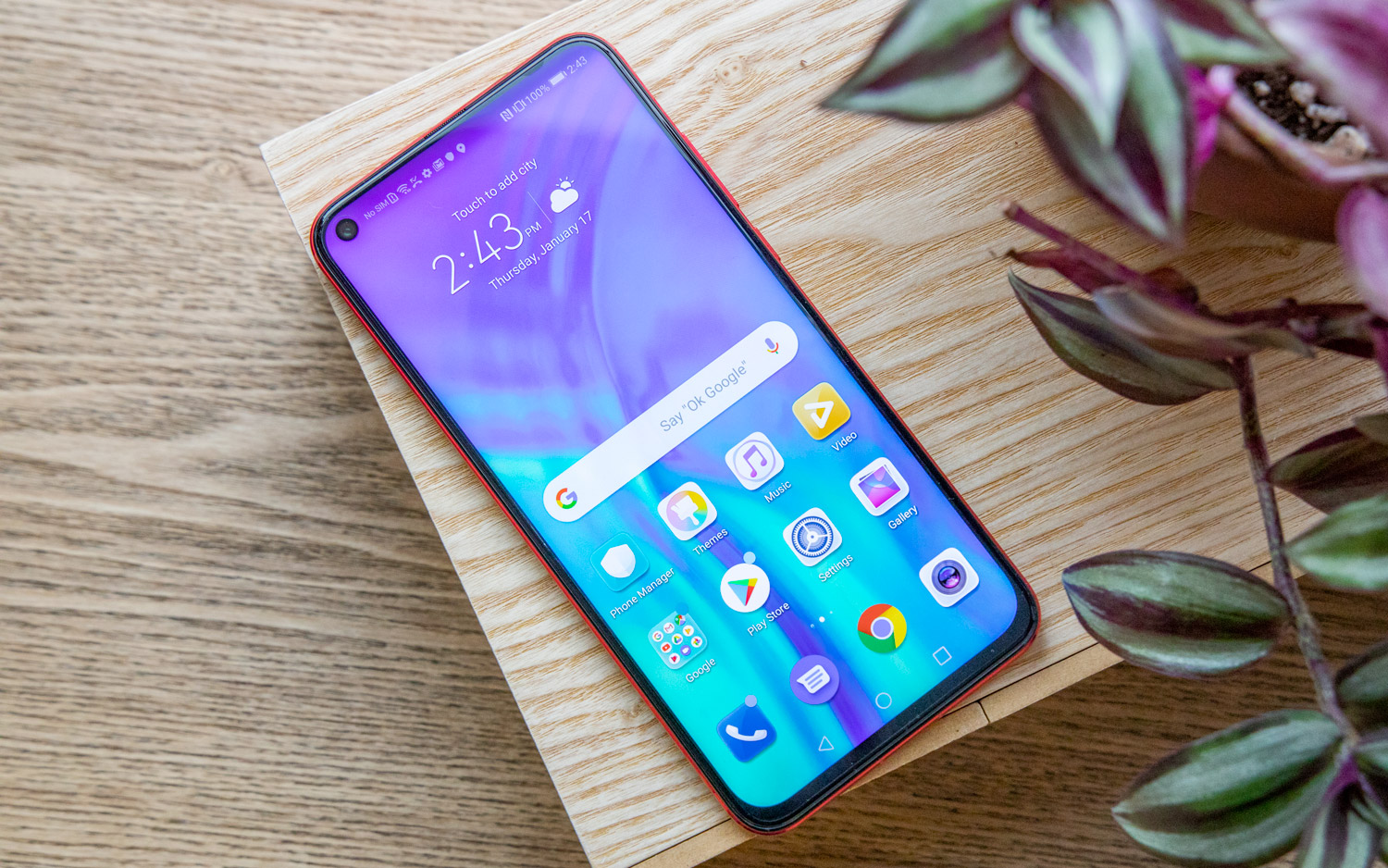Tom's Guide Verdict
Attractive, powerful and reasonably priced, the View 20 is a strong first step into the top-end flagship world by Honor, sitting comfortably among far more expensive phones from far larger brands.
Pros
- +
Astonishing 48MP camera
- +
Smart design front and back
- +
Punch-hole display works well
- +
Big, fast charging battery
- +
Headphone jack
Cons
- -
Magic UI still isn't great
- -
No wireless charging
- -
No in-screen fingerprint reader
Why you can trust Tom's Guide
Honor is a brand in a state of flux. Once known as the cool kid on the block — a smart, funky alternative to the boring mid-range phone pack — it’s now looking at the premium-flagship handset market with envious, yet hungry eyes.
The problem is that if you are really going to take on the likes of the iPhone XS, Google Pixel 3 and Samsung Galaxy Note 9, then you need to come oozing innovation and packing impressive specs.
On paper, that's exactly what Honor has done with the Honor View 20. You can’t get much more impressive than the View 20’s headline-grabbing feature, its 48-megapixel rear camera, which is just one of two lenses on the phone’s back. It's a record sensor size for a phone camera, a revelation and a feature that demands to be interrogated. That is exactly what I’ve been doing since I got my hands on this handset at CES 2019.
Honor View 20 Cheat Sheet
- The View 20 is packed with megapixels: there’s a 48-MP rear camera and a 25-MP front camera on board.
- It’s the first screen to be released with a punch-hole camera on its display, ahead of Samsung’s upcoming Galaxy S10.
- It has the same Kirin 980 chipset found in the high-end Huawei Mate 20 Pro.
- Honor waves goodbye to EMUI, as the View 20 uses Magic UI 2.0 software, a re-skinned version of Android 9.
- Battery is big: the View 20 has a 4000mAh battery capacity and also USB-C fast charging (5V).
Pricing and Availability
There are two models available -- the first with 6GB RAM and 128GB storage, and the second with 8GB RAM and 256GB storage. These are quite considerable specs, but Honor is usually very competitively priced. And the View 20 is of no exception with official pricing for the 128GB version coming in at £499 / 579 Euros.
For American readers, those above prices convert directly to $648. Unfortunately, it's unclear at this time whether the View 20 is going to be offered by any carriers or retailers in the U.S. Honor is part of Huawei, after all, which isn't enjoying a great relationship with the U.S. government at the moment.
Even before that relationship got frosty, previous Honor devices struggled to make it to American shelves. Again, check back here soon to see if we have any updates about who's selling the View 20 and for how much.
Get instant access to breaking news, the hottest reviews, great deals and helpful tips.
Specs
| Honor View 20 | |
| Price | £499 / 579 Euros |
| Operating System | Android 9.0 Pie with Magic UI 2.0 |
| CPU | Kirin 980 |
| RAM | 6GB, 8GB |
| Storage | 128GB, 256GB |
| Display | 6.4 inches LCD (2310 x 1080) |
| Front Camera | 25MP (f/2.0) |
| Rear Camera | 48M (f/1.8) |
| Colors | Sapphire Blue, Midnight Black, Phantom Blue |
| Battery Size | 4000mAh |
| Size | 156.9 mm (H) x 75.4 mm (W) x 8.1 mm (D) |
| Weight | 180g |
Design: Beating rivals to the punch (hole)
The Honor View 20 is the phone first to come to market with what will eventually be a common design: a screen (6.4-inch, 2310x1080 resolution, IPS LCD display) with a punch-hole camera. It’s beautiful to look at, given that we have all had to put up with notches over the past year and a half.
The circle in the left corner, which houses a 25-MP, 27mm selfie camera (f/2.0), is barely noticeable at first glance. When the front camera does occasionally catch your eye, especially when you're Googling or using any app with a lot of white space, it’s a little like a black hole sucking all the light and vying for attention. On the (w)hole, however, it’s non-intrusive and lacks the annoyance a notch brings.
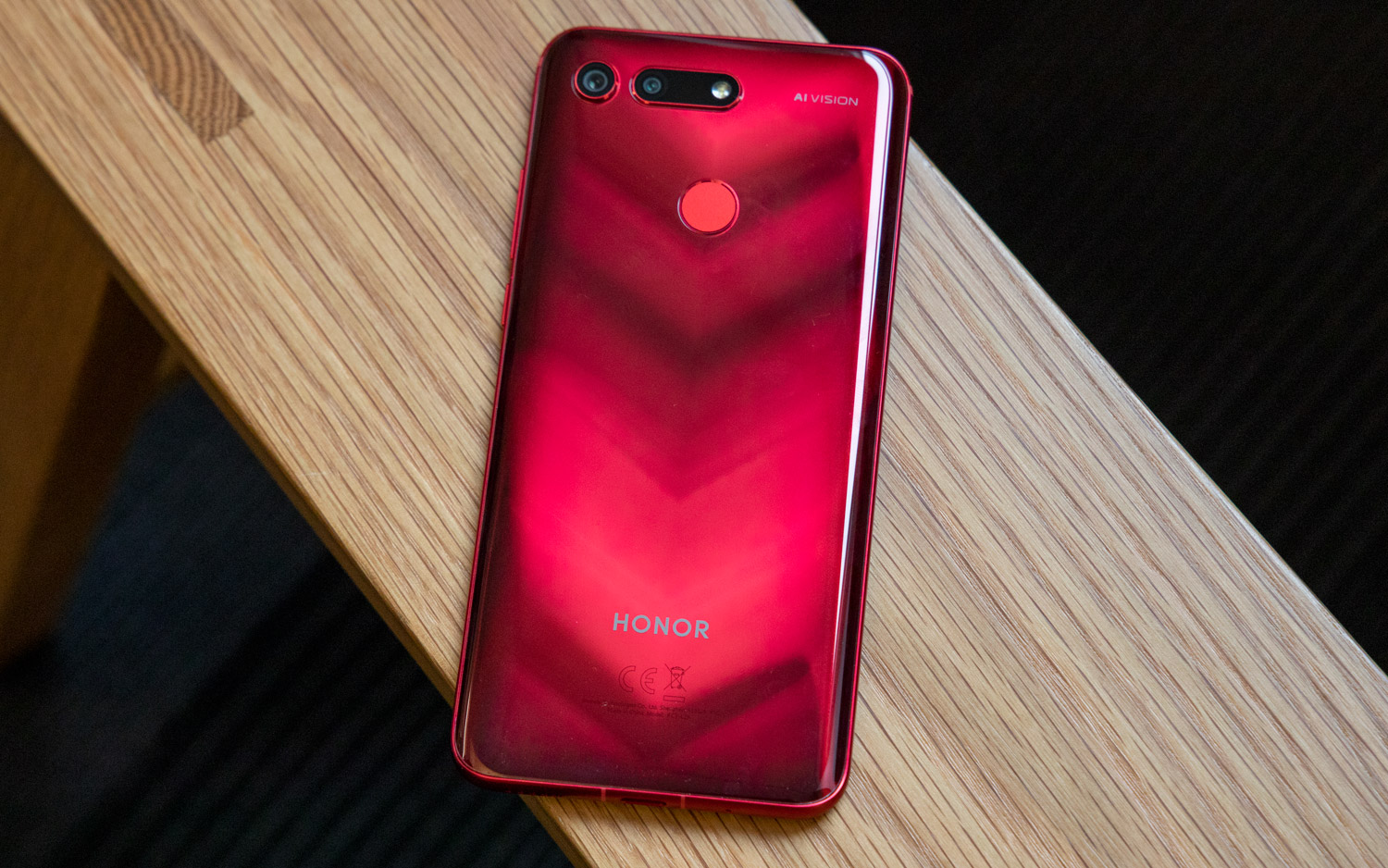
The View 20’s brilliant screen is bordered by a slight bezel. It’s noticeable but accentuates the all-screen display. If you flip the phone over, you can’t help but be mesmerized by the holographic V-shaped design on the glass rear. It’s a wonderful design flourish that is really is a joy to look at when it catches the light.
The only ugly thing about the back is the phrase Honor uses to describe this type of color scheme: nanolithographic. Ugh.
Size wise, the View 20 fits well in the hand. Measuring 6.18 x 2.97 x 0.32 inches (156.9 x 75.4 x 8.1mm) it is somewhat sleeker than other 6.4-inch smartphones, which very much veer into phablet territory. For instance, Samsung’s Galaxy Note 9 has the same screen size but is a chunkier 161.9 x 76.4 x 8.8mm. The 6.5-inch iPhone XS Max, at 157.5 x 77.4 x 7.7mm, is beaten by the View 20 in all but thickness.
The View 20 weighs 180g (6.35 oz). Compare this to the Note 9 (201g) and iPhone XS (174g), and you have a phone somewhere in the middle of them both. In my tests, its weight makes the View 20 a solid phone to use, one that doesn’t feel flimsy yet won’t give you arm ache when you hold it up for the inevitable selfies you will be taking.
Other features include the volume rocker and power button on the right-hand side (same as with last year’s View 10), while the left side houses the MicroSIM tray. You’ll find a USB-C port and mic on the bottom of the device, and — shock, horror, gasp — a 3.5mm jack on the top. Nice to see some companies have faith in ye olde headphone input.
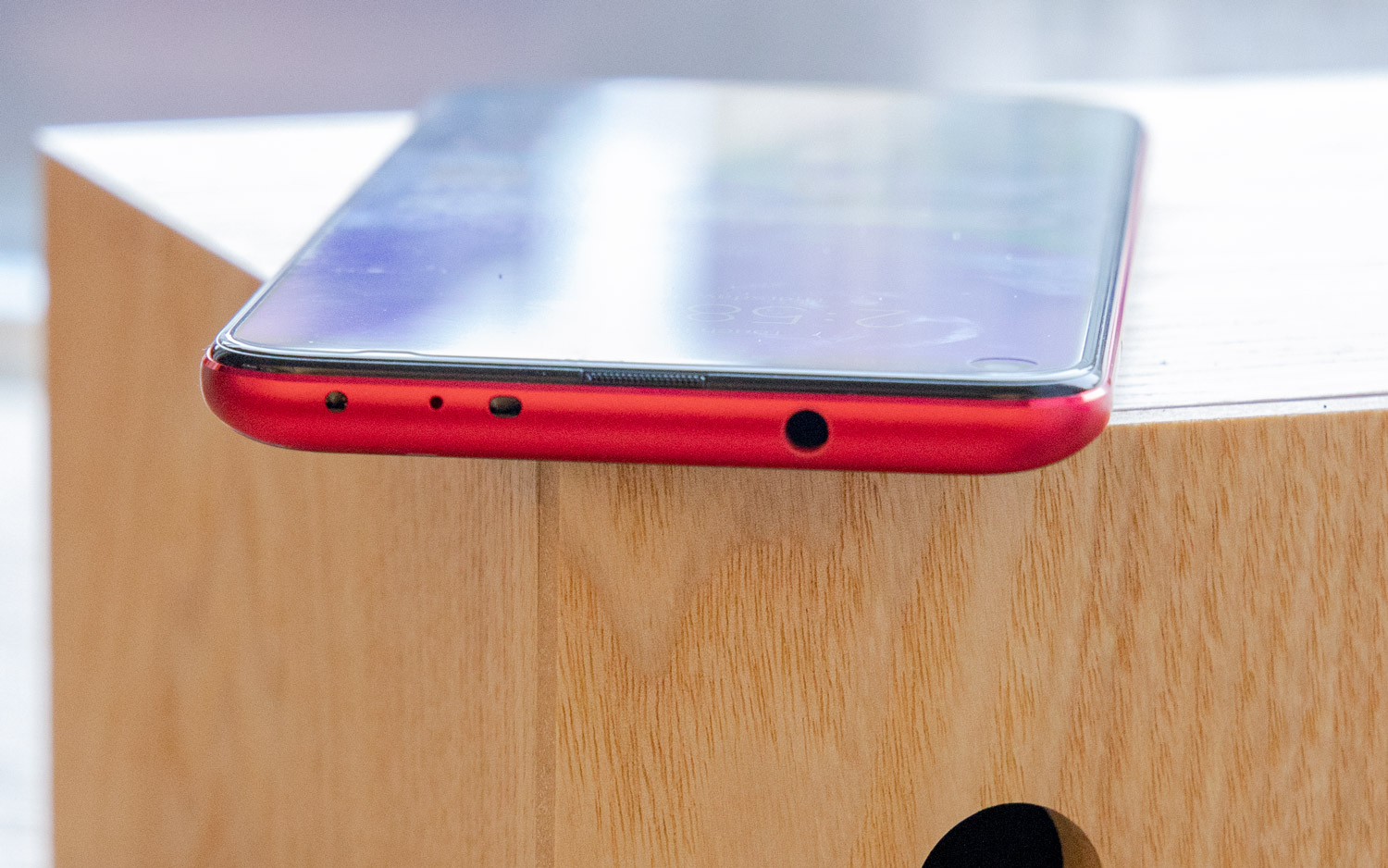
There’s no MicroSD slot available on the View 20, but you do get up to 256GB of internal storage. Honor hasn’t gone the way of parent company Huawei and put the speaker in the charging socket, so there’s a speaker grille on the bottom.
Besides the cameras and an unnecessary AI Vision label, the back of the View 20 houses a fingerprint sensor. That’s right, there isn’t in-screen security on board here as you’ll find on phones like the OnePlus 6T. You do get face recognition on the View 20, which works well thanks to the ToF (Time of Flight) sensor on board.
Display: A bold, not as bright new look
For good reason, Honor is calling this an All-View Display (thanks to the punch-hole design) and it’s a refreshing and (currently) unique screen. The 6.4-inch LCD screen on the Honor View 20 is gorgeous, though it's not quite 4K. It’s a Full HD+ (2,310 x 1,080 pixels) screen with a 19:25.9 aspect ratio.
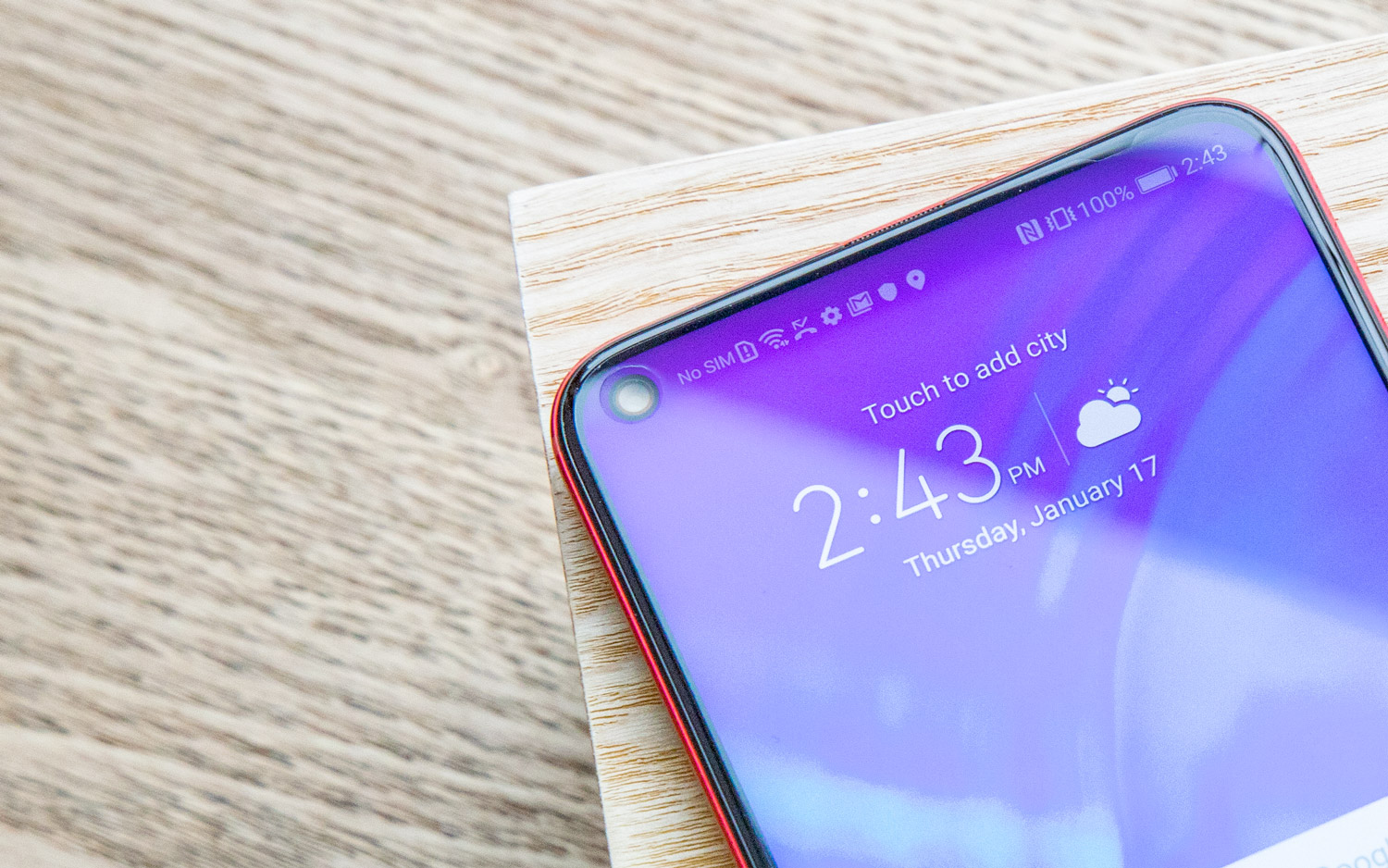
If the punch-hole camera is here to stay, then I would be happy, as this notch-free alternative is subtle and ultimately very effective. The camera hole has been made as small as possible by some clever engineering by Honor. It’s to do with Honor merging layers of the LCD with the camera lens which makes for a smaller aperture.
It’s the ultimate in camera integration and a really smart move by Honor. This level of design detail is harder to do on an LCD screen compared to OLED. Contrast that with the recent iPhone XR, which struggles to hide the notch compared to the iPhone XS because of the LCD and its backlight.
The View 20’s aspect ratio is broader than what’s seen on most phones, because of a fantastic statistic: It has a 91.8 percent screen-to-body ratio. That is impressive — the iPhone XS manages "just" 84.4 percent.
Now, LCD vs. OLED is a debate that can go on forever, but I was really impressed with this screen for the most part. The View 20’s panel suffered when taken outside in bright light, but for the majority of my time using the View 20, the screen was bright, big and bawdy and viewing angles were strong.
Putting it through our lab tests, the View 20's screen managed 375 nits of brightness. While this is better than the Google Pixel 3XL (362 nits), it is way off the iPhone XS' 606 nits and the Galaxy Note 9's 604 nits in our testing.
The sRGB color gamut registered 174 percent. In context, that’s in between the iPhone XS Max (123 percent) and Galaxy Note 9 (224 percent). Finally, the Honor View 20’s panel clocked a Delta-E score of 3.98. Given 0 is perfect we were expecting more in its hue accuracy.
MORE: Why I’m Still Using the iPhone SE
Camera: Among the best
This is where the Honor View 20 gets really interesting. The phone houses an exceptional camera, one that makes as much use as it can out of the 48MP on offer. It manages 48MP by taking advantage of the new Sony IMX586 sensor.
The shots we took at 48MP were sharp and detailed. Even on a gray day in London, next to Browning’s Pool, the texture of the water pulls through well and there’s sumptuous detail in the bark of the trees and the dirt on the supposed white paving area.

If you want an increase in detail, then Honor has added an optional AI layer on top of the 48MP option. Called AI Ultra Clarity, it doesn’t add in any more pixels but enhances the detail of the shot, so much so that things like the text on signs in the image becomes clearer.
It does suffer a little from over processing, but this is a nice touch from Honor. Given that you haven’t got the ability to zoom in while shooting in 48MP, this would be a nice alternative if you were to put the image into Photoshop and crop.
We took some snaps outside of Kings Cross station in London and the difference between the mode being on and off was incremental.
Compared to the Samsung Galaxy Note 9 and OnePlus 6T, the View 20's camera does incredibly well. In Portrait mode, the Honor phone is exceptional, beating its rivals in our tests. It added just the right amount of bokeh for my liking, although it still gets caught out with strands of hair and the like.
The View 20 outclassed the OnePlus 6T in all our tests, but the Samsung Galaxy Note 9 seemed to edge it when it came to the pastry shots we took.
There really isn’t much between the View 20 and the Pixel 3, one of the best camera phones currently available. The Honor does over sharpen in its processing, though. Our comparison shots show rich detail from both phones, but the extra megapixel grunt does seem to give the View 20 a slight edge when it comes to detail. The Google Pixel 3 still feels like the better all-round camera phone, however.
Honor is, quite rightly, proud of the View 20’s camera credentials. It’s a phone that has managed to push what camera phones can do when it comes to megapixel count. It doesn’t quite have the standout featured that I had hoped for, though.
Yes, 48MP is a phenomenal achievement on a phone but there’s nothing like the Google Pixel 3’s Night Sight mode that you could push as a unique selling position. The Night Mode on the View 20 does a pretty decent job at picking out detail through the murk, even if the images we took were a little blurry.
The 25-MP selfie camera also works well, but the bokeh effect did get confused a few times with hair and the like. Again, the megapixel count is impressive, but it doesn’t really add that much to the quality of the images when compared to other phones.
There are a nice amount of manual controls available on the View 20. The camera app setup is practically the same as used in the Huawei Mate 20 Pro, so you can control things like exposure compensation, white balance and ISO.
For those who prefer the phone to take control, the AI features may not be pushed as hard as on the Mate 20 Pro but there are some 1,500 scenarios the phone should recognize. I mostly got "leaves" and "building" in my tests, so we will have to take Honor’s word for that.
The other side of the AI can be seen in the AR Camera functionality (Honor’s passable attempt at Google’s AR Lens) and a version of Apple’s Animoji, which is a little on the gimmicky side.
Performance: Impressive results
The Honor View 20 really impressed in our performance tests. Featuring the Kirin 980 chip (the same as the Huawei Mate 20 Pro) and an octo-core processor, Honor’s phone scored a massive 9,545 on Geekbench 4, a test which checks overall performance. It’s not surprising that this score is achingly similar to the Mate 20 Pro, which scored a slightly higher 9,973.
That score is still behind what the Apple iPhone XS Max (11,515) can do with its A12 Bionic processor. But it’s above phones like the OnePlus 6T (8,972), Samsung Galaxy Note 9 (8,876) and the Google Pixel 3 XL (7,684), which are all powered by a Snapdragon 845 chipset.
On 3DMark Slingshot Extreme, which measures graphics performance, the View 20 managed 3682. In comparison the Pixel 3 XL reached 4,396, the iPhone XS Max (4,339) and the Note 9 (4,639). This isn’t a bad score, but it’s clear that Honor’s focus has been elsewhere.
The View 20’s benchmark results were backed up by real-world testing. Fortnite on the handset was buttery smooth, and so was Hitman Sniper. Flipping between apps, such as Facebook, Twitter and Reddit, showed little-to-no lag. Even Chrome and YouTube, notorious data sappers, were slick on the device.
When playing games, the amount of screen dedicated to gaming is superb. That small punch-hole is covered up by your thumb when gaming, which makes it feel like the game takes over the entire screen. This is something phones with notches or big bezels just can’t match.
Battery: Long-lasting phone
The Honor View 20 has been given a 4,000-mAh battery, and this shows in our tests. On the Tom’s Guide Battery Test, where we continuously surf the web over T-Mobile’s LTE network at 150 nits of screen brightness, the View 20 lasted a brilliant 11 hours, 34 minutes, beating the smartphone average of 9:48.
That topped the Huawei Mate 20 Pro, which clocked in at 10:09. This also beats the Note 9, which lasted an impressive 11:16 hours. But it didn’t quite match the Google Pixel 2 XL, which is still high up at 12:09.
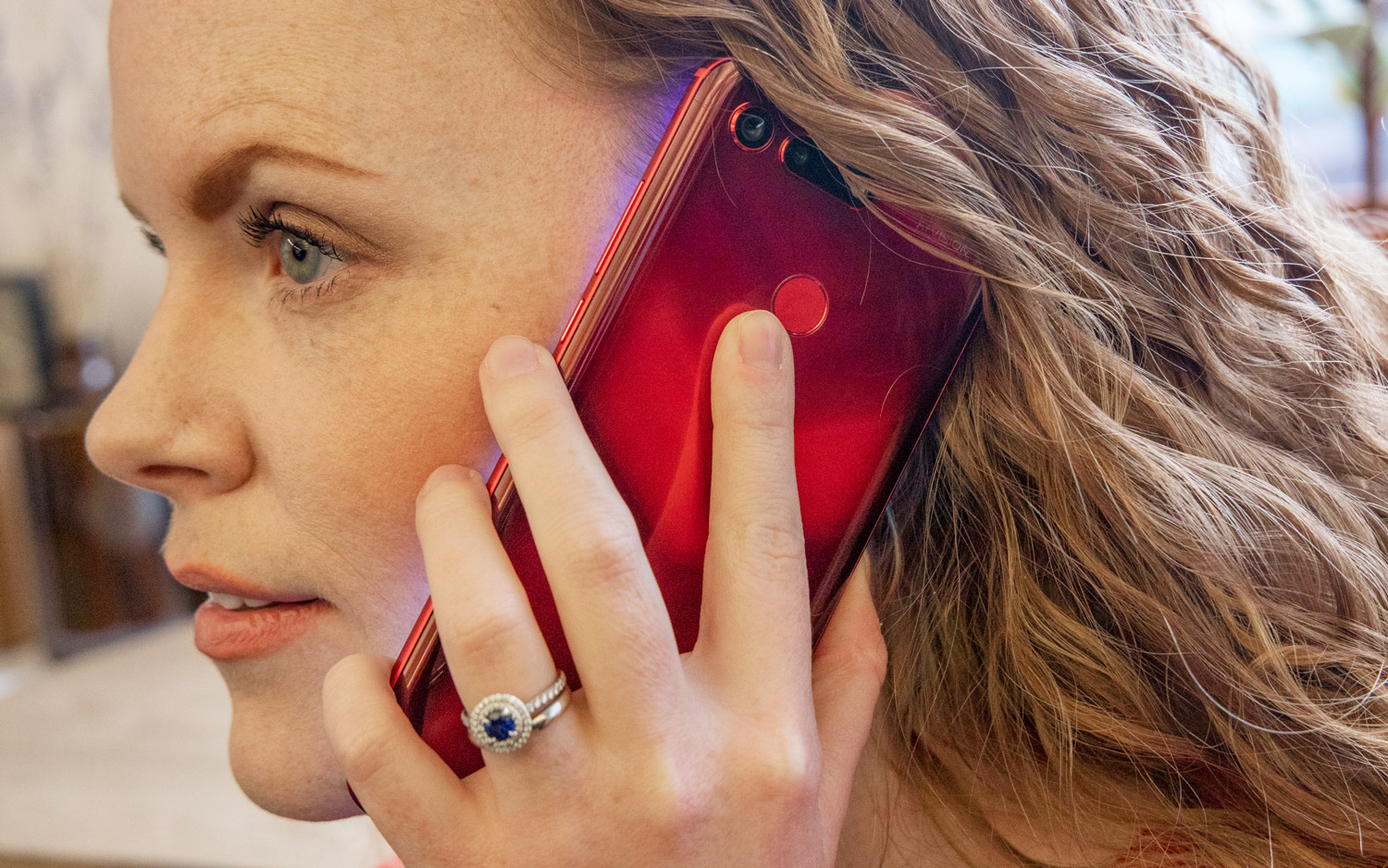
In real-world use, this meant that we had a phone that lasted a full day (with regular social-network checking, gaming and Netflix on our commute) and then some.
According to Honor's numbers, the Super Charge system can get the View 20's battery to 55 percent full after 30 minutes charging. Our testing proved that to be quite accurate; our demo handset going from zero to 50 percent in 26 minutes, 75 percent in 40 minutes and to full charge at the 1-hour-15-minute mark. While there’s fast charging on board, there’s no wireless charging, which is a real shame.
Software and Interface
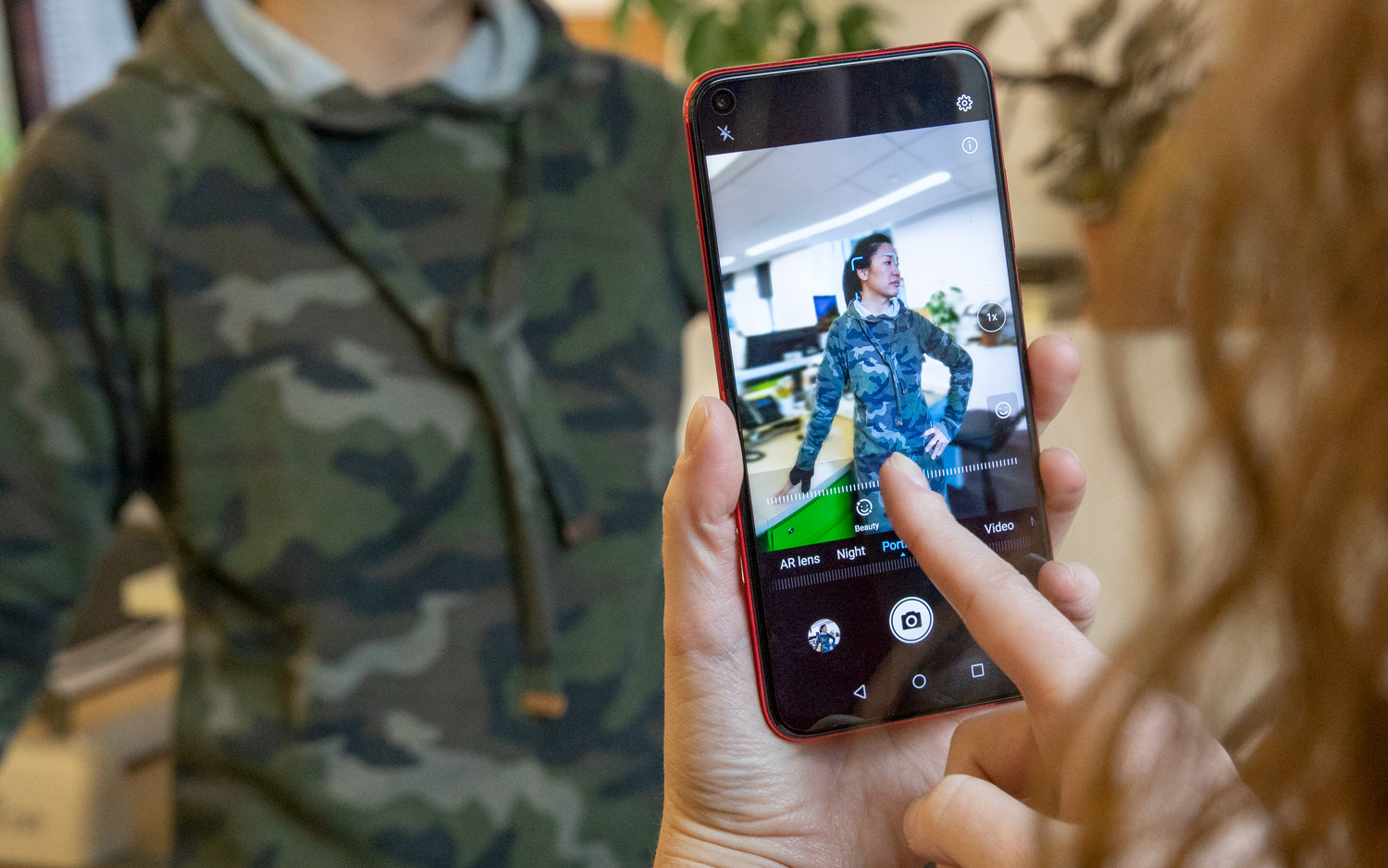
I’ve never been the biggest fan of EMUI, Honor’s bespoke user interface. It was with a little bit of relief, and some trepidation, that I tried out the View 20’s UI as it’s a phone that makes use of Magic UI 2.0.
This is an Android launcher and is never going to satisfy those who like their Android a little purer, but it does feel improved. As with EMUI, it comes out of the box as having all the apps on one screen. You can choose to have an app drawer and also choose from the type of system navigation: gesture, three-key navigation (the default) and navigation dock.
If you want to make the best use of the screen then gesture is your best bet here. It’s nice and intuitive using the gestures, but not having the visuals may put some people off.
It’s difficult to point to any significant changes between EMUI and Magic UI as it all feels like a rebranding exercise at the moment. But the menu-tidying that Huawei did for the Mate 20 Pro seems to be present in this UI and there’s a slickness flicking between apps.
There are a few changes to options that I noted as well. On the camera app, AR Lens is a lot more apparent. Instead of being in the More section, as it was put in the Huawei Mate 20 Pro, it’s now on the main menu, right next to Night mode.
The main settings menus is identical to EMUI 9.0, even down to having Huawei Share as an option. Given Honor wants to break out as a brand on its own, I would have expected an Honor-branded version of this service to be found in the View 20. The same goes with the Huawei ID log in section on the View 20.
There’s a notable omission, too, of a Dark Mode. Not only is this one of the most popular modes around at the moment when it comes to helping combat eye strain, but it also helps with battery power. I couldn’t find this in the myriad menus of the View 20. There is an Eye Comfort option, though, that is said to help “visual fatigue” by filtering out blue light.
Another wellbeing option is Digital Balance, with which you can add screen-time-management options to your phone use and see how long you have been using your phone.
Those who are fans of Honor’s Party mode will be pleased to read that it is present and correct on the View 20. This allows you sync the songs on your phone with another Honor phone. This was offered in an update to the View 10 and comes as standard with the View 20.
MORE: Most Anticipated Phones of 2019
Bottom Line
The Honor View 20 is a smartphone with standout specs that aims for the heights of the other flagship phones on the market and nearly reaches them. Its camera technology is stunning, its punch-hole display mesmerizing. The designers of the View 20 have to be applauded for managing to get the selfie camera in such a tight space that allows the rest of the screen to stand out.
Couple this with beefy battery life and a rear design that’s unlike anything else on the market and Honor really has created a phone that packs a punch. If it does come at a price under $500/£500 (TBC) then there is a lot of phone here for the money.
Unfortunately, Magic UI 2.0 still doesn’t match the software on other phones and will certainly irk Android purists. Thankfully Android 9 is underneath but you still have to wade through some unnecessary re-skinning to get to what you want.

And then there’s the 48MP camera. On paper this is a jaw-dropping spec and while in our tests it shined, there was nothing that stood out among it peers. You’ll get a top-performing camera from the View 20, but if taking photos are your primary concern, there are phones out there that marry specs with software that bit better.
But that’s the thing about the Honor View 20. Its peers are no longer midrange phones, but now include the likes of the Note 9 and iPhone XS Max. And thanks to the improvements made by Honor, the View 20 fits in very well with that company.
Credit: Tom's Guide
Marc Chacksfield is Director of Shortlist Media and Editor-In-Chief of Shortlist. He's been a technology and entertainment journalist for 15 years and was previously UK Editor In Chief at Tom's Guide, TechRadar and Digital Camera World. He's also written for the likes of T3 and Tom's Hardware. In his spare time he tries to play guitar, PlayStation and supports Chelsea.
